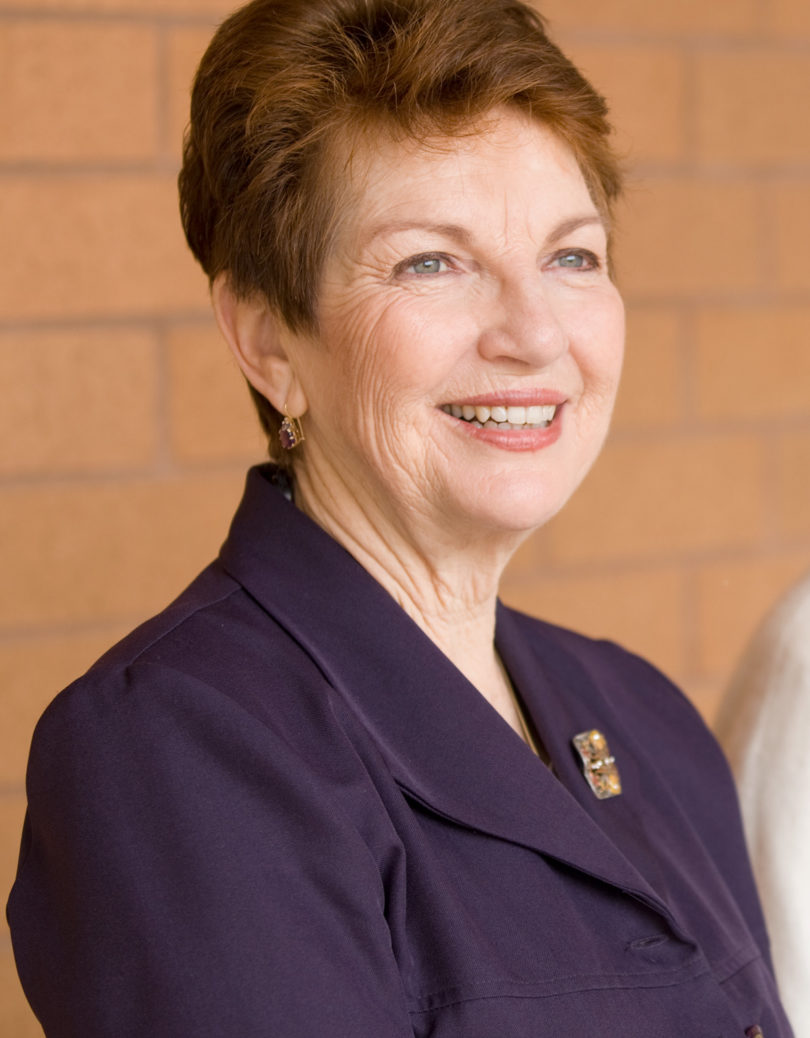Elaine Cress, a professor of exercise science at UGA’s College of Education and director of the Aging and Physical Performance Laboratory, talks about the importance of strength training for older adults, the pleasures of doing research that involves working with people directly and the benefits of intergenerational exercise classes—where the young and the old learn from each other, enjoy an enriched experience and improve their fitness.
Columns: Why is strength training so important for older adults?
Cress: We lose muscle mass as we age, and that’s exacerbated by the fact that many of us also become more sedentary. And even those who are physically active may not necessarily work their muscles systematically. So over time, older adults have more trouble doing everyday activities such as climbing stairs, carrying groceries and interacting with their grandchildren. Without a methodical effort to overload the muscles regularly and progressively, people’s strength and functionality diminishes and routine tasks gradually become more difficult. Strength training can prevent such declines and make those tasks easier.
Columns: What motivated you to begin teaching intergenerational exercise classes?
Cress: I got the idea when I saw an older adult in the gym who was not doing things quite right. It occurred to me that I should get my students together with older adults to instruct them and that the students would benefit just as much.
The perfect forum for students studying exercise and aging is to work with older adults who want to learn strength training. At any one time, we have 15 students in the same class as 15 older adults who come our way from the Learning in Retirement program [which recently changed its name to the Osher Lifelong Living Institute at the University of Georgia.
Our students . . . don’t always have experience in strength training, so they also strength train while learning to help the retirement program participants. Along the way, the students develop skill in modifying the exercises to accommodate adults who have physical limitations or health concerns. They also monitor participants’ progress and safety. The result is that older adults get so much more out of this class than they would by simply going to the gym.
Columns: How does your teaching connect with your research interests?
Cress: My research interest is maintaining function in older adults, and exercise is the best way to do that. I used to be a bench scientist studying muscle biopsies. But I much prefer to work with people. Through my classes in both gerontology and kinesiology, I gain insights into what students want to learn about gerontology. By meeting twice a week with the older adults in the retirement program’s strength training class I really get to know them. They provide specific examples to reinforce my teaching, and I gain insights about how to modify exercises to help older adults. The retirement program participants are willing volunteers in many of my research studies, and they also speak to my classes. Students working in my laboratory also bring remarkable talent that assists my research goals. Currently I am working to understand the impact of older adults’ functionality based on where they live.
Columns: In what ways does your research apply to people’s daily lives?
Cress: In my research I measure physical function and look at various interventions that help older adults to carry out everyday activities.
When I began, I was looking more at muscle and bone response to exercise. But I soon learned that older adults were more concerned about being able to walk up the stairs or to get out of the bathtub without crawling on their knees, than they were about some strength number. So while I agreed that it’s important to know their strength and cardiovascular fitness levels, I also started asking, “How can we measure the things that participants really care about?”
I developed the Continuous Scale Physical Function Performance test, a method that quantifies the performance of everyday tasks such as sweeping the floor, transferring laundry or carrying groceries. The CS-PFP test has been validated against laboratory measures of cardiovascular fitness and strength, and because it’s standardized it can be administered at diverse locations. The test is used around the world.
The CS-PFP test gives us information about how people actually do things in their lives. It measures upper-body strength, lower-body strength, upper-body flexibility, balance, coordination and endurance. From a research standpoint, it helps us understand what part of people’s problems in physical function is due to limitations in these measures. A lot of researchers around the country are using this test to look at interventions to improve function in people who have, say, Parkinson’s disease, fibromyalgia or congestive heart failure.
Columns: How important is balance in older adults’ functionality?
Cress: Balance is very important. Let’s say a woman has fallen. Even if the fall didn’t result in physical injuries, the incident may scare her and profoundly limit what she chooses to do from then on. In effect, if someone is capable of doing a task, but elects not to do it, this indicates that he or she has essentially lost the ability to perform the task. Balance and coordination are part of our test.







